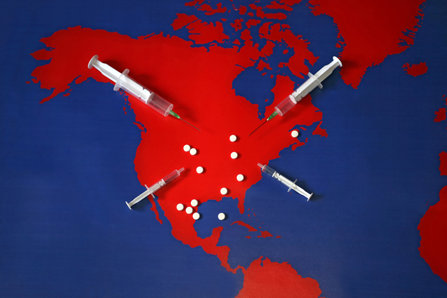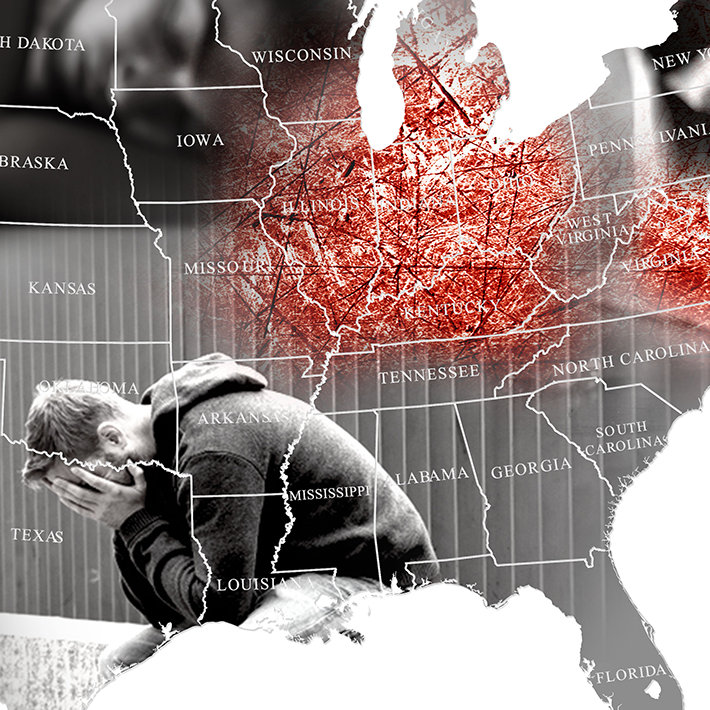Why Is the World’s Wealthiest Nation Also a World Leader in Drug Overdoses?

The United States is undoubtedly one of the most powerful, wealthiest, and most advanced countries in the world. And while we should always anticipate some shortcomings in even the greatest of nations, it comes as a surprise that the United States takes fifth place in the entire world for drug overdose deaths. The U.S. is ahead of almost all other developed nations for drug overdoses. The U.S. also loses more people per capita to drug overdoses than most third-world countries.
How could this be?
A Unique Condition
According to the World Health Rankings Forum, a division of the World Health Organization, the ten countries that suffer the most from drug overdoses are:
- Ukraine
- Belarus
- Russia
- Estonia
- The United States
- Norway
- Lithuania
- Nigeria
- Seychelles
- Finland
That is a startling revelation. Exactly 183 countries were studied by the World Health Organization and the U.S. is in the top ten list, the top five actually, for fatal drug overdoses. But by that same token, we have a decent healthcare system, a good quality of life for most Americans, fair life expectancies, relatively few severe challenges or adversities, virtually no enemy threats, etc. So how is it that we have such a severe drug overdose problem?
What Seems Old Is Sometimes New
In 2017, the Department of Health and Human Services declared a public health emergency in regards to opioid addiction. When it made that announcement, it offered a great deal of grim information to back up the announcement.
There is a relatively concise explanation for why our overdose problem is as bad as it is, and why 130 people die from drug overdoses every day. According to the Department of Health and Human Services:
“Increased prescription of opioid medications led to widespread misuse of both prescription and non-prescription opioids before it became clear that these medications could indeed be highly addictive.”
“In the late 1990s, pharmaceutical companies reassured the medical community that patients would not become addicted to opioid pain relievers, and healthcare providers began to prescribe them at greater rates. Increased prescription of opioid medications led to widespread misuse of both prescription and non-prescription opioids before it became clear that these medications could indeed be highly addictive.”
It is then no surprise that the HHS also reported that 11.4 million Americans misused prescription opioids in 2017. About 47,600 people died from overdoses on opioids that year. About 2.1 million people had chronic addictions to opioids. At least 2 million people had misused opioids for the first time that year.
The HHS also reports on heroin, another dangerous opioid drug. According to the documentation, 886,000 people used heroin in 2017, 81,000 of them being individuals who used it for the first time that year. In 2017, 15,482 people died from heroin overdoses.
It all started with the overprescribing of opioid pain relievers. That set off a chain reaction of drug overdoses. It began with opioid pain relievers, led to heroin, led to synthetic opioids, and led to upticks in overdoses on several other types of drugs as well.
Overdose Statistics
Let’s take a look at some of the statistics on overdoses in the U.S. as reported by the Centers for Disease Control and Prevention:
- In 2017, 70,237 people died from drug overdoses. It was the highest number of drug deaths that the country had yet experienced, and it represented a 9.6 percent increase in drug deaths from 2016.
- The age group most affected by the lethal nature of drugs was those aged 25 to 54, i.e., middle-aged, working-class adults.
- Drug overdoses happen in every state, but they do not occur uniformly across America. Some states are affected far more severely than others are. That could give us some insight as to the various aspects that make lethal overdoses more likely to occur. According to the CDC, West Virginia loses 57 people to drug overdoses every year for every 100,000 residents of the state. Next up is Ohio, Pennsylvania, and the District of Columbia.
- The biggest killer on the drug scene in America is by far opioid drugs. Just from 2016 to 2017, opioid-related deaths increased by 45 percent. In 2016, six people in the United States for every 100,000 population died from opioids. By 2017, that number had risen to 9 people dying for every 100,000 residents.
Seeking Help for a Drug Problem Before It Is Too Late

Drug and alcohol addiction can be and often is a lethal condition. We are talking about a health crisis that kills 130 people per day, tens of thousands per year.
We often do not grant addiction the degree of care and attention that it deserves. We see addicts going about their lives, most of them working jobs, most of them walking, talking, interacting, and going through life. Yes they’re facing struggles and hardships, yes they’re worse for wear, but they’re not usually incapacitated. They don’t necessarily look like they’re on death row. They don’t always look like they’re in a critical condition—until they are.
The life-robbing nature of addiction often strikes when it is least expected. That’s why we can’t waste time with addiction. If we know someone who is struggling with a drug habit, it’s on us to help them overcome that habit, even if they’re trying to convince us that they have it “under control.”
The key to overcoming addiction, the solution to preventing that crippling overdose that might be just around the corner lies in residential drug treatment. Addiction treatment centers can help people overcome the chemical, mental, and spiritual aspects of addiction. Residential treatment centers safely do this, all under a protected and supervised setting surrounded by support, compassion, and care.
If you know someone who is struggling with a drug problem, do not hesitate to get them help. Remember that we are living in a nation with one of the most lethal drug problems in the world. The solution to reducing the fatal condition across America lies in the same answer that will save your loved one’s life. When we get people into treatment, we save their lives. That helps them heal, and it helps our whole country heal as well.
Sources:
- https://www.worldlifeexpectancy.com/cause-of-death/drug-use/by-country/
- https://www.hhs.gov/opioids/about-the-epidemic/index.html
- https://www.cdc.gov/nchs/products/databriefs/db329.
Reviewed by Claire Pinelli, ICAADC, CCS, LADC, MCAP, RAS


